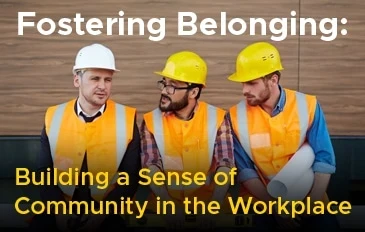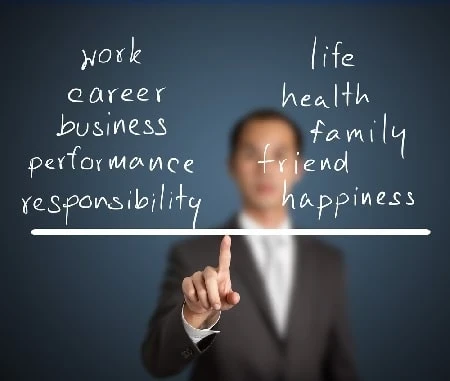Michael DeSafey | Executive Recruiter and HR Professional
Managing Mental Health and Wellbeing in the Engineering Workforce
Engineering is often associated with innovation, problem-solving, and technical prowess. However, behind the scenes of groundbreaking projects and technological advancements lies a workforce that grapples with its own set of challenges, including mental health and wellbeing. Engineers face demanding work environments, tight deadlines, and high-pressure situations, all of which can take a toll on their mental health if not properly addressed.
The importance of prioritizing mental health and wellbeing in the engineering workforce; the unique stressors that engineers face, the consequences of neglecting mental health, and strategies and resources for fostering a supportive and healthy work environment are all important to address.
Understanding the Challenges
Engineers often work in fast-paced environments where precision and efficiency are paramount. They may face long hours, tight project deadlines, and intense scrutiny of their work. Additionally, the nature of engineering projects can be inherently stressful, especially when dealing with high-risk projects or complex technical problems.
Moreover, the culture within the engineering profession may perpetuate a stigma around mental health issues. There is often an expectation to maintain a stoic demeanor and push through challenges without showing signs of vulnerability. This can lead engineers to downplay their struggles or hesitate to seek help when needed.
Consequences of Neglecting Mental Health
Ignoring mental health concerns within the engineering workforce can have significant consequences, both for individuals and organizations. Untreated mental health issues can lead to decreased productivity, increased absenteeism, and higher turnover rates. Furthermore, poor mental health can impair decision-making abilities and compromise safety on engineering projects, putting both employees and the public at risk.
In addition to the tangible effects on performance and safety, neglecting mental health can have profound personal consequences for engineers. Chronic stress, anxiety, and depression can erode job satisfaction and overall quality of life. Left unchecked, these issues can escalate into more severe mental health disorders and have long-term repercussions on individuals’ health and wellbeing.
Strategies for Promoting Mental Health and Wellbeing
Creating a supportive work environment that prioritizes mental health requires a multifaceted approach. Here are some strategies that engineering organizations can implement to promote mental health and wellbeing among their workforce:
-
Raise Awareness: Education is key to reducing the stigma surrounding mental health. Employers can offer training sessions or workshops to increase awareness of common mental health issues, signs, and symptoms, as well as resources for seeking help.
-
Promote Work-Life Balance: Encourage employees to maintain a healthy balance between work and personal life by setting clear boundaries around work hours, providing flexible scheduling options, and promoting the use of vacation time.
-
Offer Employee Assistance Programs (EAPs): EAPs provide confidential counseling and support services to employees facing personal or work-related challenges. By offering access to mental health professionals, organizations can help employees address issues before they escalate.
-
Foster a Culture of Support: Create a workplace culture where employees feel comfortable discussing mental health openly and seeking support from colleagues and supervisors. Encourage regular check-ins and provide avenues for employees to share their concerns without fear of judgment.
-
Provide Resources and Benefits: Offer resources such as access to mental health hotlines, online therapy platforms, or mindfulness apps. Consider expanding healthcare benefits to include coverage for mental health services.
-
Prioritize Psychological Safety: Psychological safety refers to an environment where individuals feel safe to take interpersonal risks, such as speaking up about concerns or admitting mistakes, without fear of retaliation or judgment. Cultivate a culture of trust and openness where employees feel valued and respected.
-
Encourage Self-Care: Promote self-care practices such as regular exercise, mindfulness meditation, and stress management techniques. Consider offering wellness programs or workshops to teach employees how to prioritize their mental and physical health.
-
Provide Managerial Training: Train managers and supervisors to recognize signs of distress in their team members and to respond empathetically and effectively. Equip them with the skills to support employees in managing workload pressures and navigating challenging situations.
-
Normalize Help-Seeking Behavior: Lead by example by normalizing help-seeking behavior among leadership and senior staff. Encourage executives and managers to share their own experiences with mental health challenges and how they sought support.
-
Evaluate and Adapt: Continuously evaluate the effectiveness of mental health initiatives within the organization and solicit feedback from employees. Adapt policies and programs based on feedback and evolving best practices in mental health management.
Prioritizing mental health and wellbeing in the engineering workforce is not just a moral imperative but also a strategic investment in organizational success. By addressing the unique stressors faced by engineers and fostering a supportive work environment, organizations can promote employee resilience, enhance job satisfaction, and improve overall productivity and safety.
It’s time for the engineering profession to recognize that mental health matters and to take proactive steps to support the wellbeing of its workforce. Together, we can cultivate a culture of care and compassion where engineers thrive, both personally and professionally.
Webuild Staffing Agency is a leading executive search and staffing agency dedicated to the construction, engineering and environmental industries. To learn more please visit: www.webuildstaffing.com



